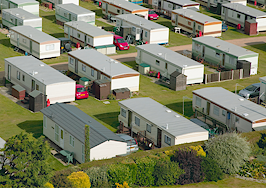In these times, double down — on your skills, on your knowledge, on you. Join us Aug. 8-10 at Inman Connect Las Vegas to lean into the shift and learn from the best. Get your ticket now for the best price.
After screening tenants and finding a trustworthy and qualified renter, landlords will have to come up with the terms for renting out the home.
Those terms will often be spelled out in a lease agreement.
“Some people don’t have a lease agreement in writing,” said Michael Lucarelli, CEO of RentSpree. “Even when I actually first moved to L.A. my landlord didn’t even have a lease agreement in place. He wanted to have a handshake deal.”
“You need something in writing,” he added.
That raises the question of what should be included in the terms. Here are five tips for what landlords should include in a rental lease agreement.
Start with the basics
Lucarelli said landlords should start with the basics.
“You need a start date, a security deposit outlined, the rent payment,” he said, “any information about rent payment increases.”
There are numerous examples of lease templates that landlords can use that will likely have placeholders covering the need-to-have basics, Lucarelli said.
Outline future rent increases
Landlords may want to consider spelling out future increases in monthly rent in the lease. If that’s the case, landlords should be aware of what state and local laws allow, Lucarelli said.
“Anything that’s outlined about rent increases that are compliant pursuant to local laws,” he said. “If there’s rent control you need to take that into account as well.”
That could put landlords at risk of baking in a rent increase that is lower than changes in the market. Rent was 8.5 percent higher in March 2023 than in March 2022 in Boston, according to Zillow. A landlord might be leaving money on the table if a tenant already agreed to a 5 percent increase for a lease that renewed the same month.
Who takes care of what?
Landlords and tenants will need to be on the same page about who’s taking care of what.
“A big one is care of the property,” said Nathan Gesner, owner/broker of American West Realty and Management. “Who’s responsible for maintaining the utilities, the landscaping? What maintenance is tenant responsibility versus landlord responsibility?”
Gesner suggested breaking things down and requiring tenants to take care of “consumables,” like light bulbs or batteries for appliances like smoke detectors.
“Also, letting them know that if maintenance is required due to tenant neglect, abuse or misuse, then the tenant may be held liable for that repair,” he added.
Require renters’ insurance
Gesner and Lucarelli both recommended including a requirement that tenants hold renters’ insurance.
“That can be a way to mitigate your risk as a landlord,” Lucarelli said.
Those policies typically cover things like the renters’ property from theft, damage and injury, so it’s smart for landlords to ensure renters maintain a policy during their lease.
“As soon as they start leasing a property, they’re enrolled in our master insurance policy and it covers all the tenants on the lease,” Gesner said. “If three friends rent together they’re all covered under that one policy.”
Gesner said landlords can require that they be added as an “additional insured” to the policy, which would notify them if a renter cancels a policy after initially showing proof that they obtained one.
Spell out severable liability
Gesner also recommended that a lease includes a clause that ensures that if one of several renters in a home fails to pay or maintain a property, the others on the lease are responsible. It’s known as “severable liability.”
“That’s the clause used to explain that each individual named on the lease is 100 percent liable for the terms,” Gesner said. “The landlord is legally allowed to go after all three individuals.
So everybody is 100 percent liable for all terms, not just a portion of the terms.”
Get Inman’s Property Portfolio Newsletter delivered right to your inbox. A weekly roundup of news that real estate investors need to stay on top, delivered every Tuesday. Click here to subscribe.












